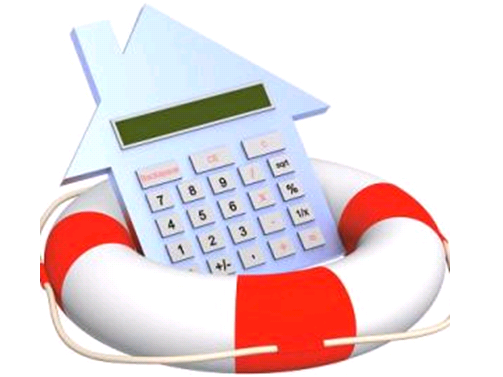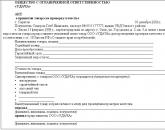Methods for calculating the amount of depreciation deductions
In modern accounting, there are regulated rules for accounting for assets. According to one of these rules, certain types of assets are subject to mandatory depreciation. In the current article, the following points will be considered: what is the value of depreciation, what types of assets are subject to it, and also how to calculate the amount of depreciation.
Depreciation value
It's no secret that equipment and some other assets tend to wear out. At the present stage, two types are distinguished: moral and physical wear and tear.
Moral obsolescence lies in the fact that an object, without having used up its physical properties, becomes useless in connection with the achievements of science and technology. An example of such an obsolete object is a fax machine, because companies are increasingly resorting to using e-mail instead of it.
Physical deterioration implies that the object has worn out in a material form. For example, a metal-cutting machine has become unusable due to the wear of parts and assemblies.
Due to the fact that certain assets wear out, and by the time they are completely worn out, it becomes necessary to purchase new ones, companies create a depreciation fund. Monthly sums are received into this fund, and thanks to this, after the useful life of the facility expires, the company will be able to afford to purchase a new one to replace it.
What is depreciation? This term refers to the mandatory (with a frequency of once a month) transfer of the value of an asset to finished products.
What assets are subject to depreciation?
It is not difficult to determine the objects that need to be depreciated. These are the assets included in the group "Non-current assets". These include:
- Fixed assets (this type of asset implies repeated use of an object in the manufacturing process, its service life must exceed twelve months, must be used to generate income (for example, a personal computer));
- Intangible assets (objects related to this form of assets are similar in their properties to fixed assets, but there is a difference - such assets do not have material qualities (for example, a program for a personal computer developed by the company's staff)).
The depreciation rules for these types of assets differ and will be discussed further.
What types of assets should not be depreciated?
If we talk about non-current assets, then deductions are not made in the following situations:
- If the object is under reconstruction for more than twelve months;
- If the object is mothballed for a period of more than three months;
- If the cost of the object is less than forty thousand rubles;
- If the object refers to works of art or literature;
- If the object is received free of charge.
As for current assets, according to the rules, such objects are not subject to depreciation. These include:
- materials;
- raw material;
- Fuel;
- Cash;
- Container;
- Other objects of current assets.
Depreciation calculation methods for fixed assets
To calculate the amount of depreciation deductions for fixed assets, the rules establish several methods. Which technique to choose for a particular object, the administration of the company determines independently. But, the chosen methods must be prescribed in the accounting policy of the company.

Four methods are used to calculate deductions for accounting purposes:
- Linear reception. To calculate the amount of the monthly depreciation charge, you must perform the following arithmetic operations:
- Perform the product of the primary cost of the object and the depreciation rate;
- Divide the result obtained in the above action by twelve.
Let's take an example: an organization purchased and immediately put into operation a color printer worth 48,000 rubles. Its useful life is four years. Calculate the monthly depreciation rate:
- Multiply the primary cost and the depreciation rate (found by dividing 1 by the useful life and multiplying by 100%): 48,000 * (1/4 * 100%) = 12,000;
- Divide the result by 12 months: 12,000/12 = 1,000.
Thus, the monthly amount will be 1,000 rubles.
- Decreasing balance acceptance. To determine the amount of depreciation, perform the following steps:
- Multiply the residual value of the asset by the accelerating rate and by the depreciation rate;
- Divide the result of the first action by twelve.
As an example, let's take the same situation, but add the condition that the acceleration factor for a color printer is set to two. Then:
- We multiply the cost of the object with the accelerating indicator and the depreciation rate: 48,000 * 0.25 * 2 = 24,000;
- Divide the result by 12 months: 24,000/12 = 2,000.
Thus, the monthly amount will be 2,000 rubles.
To calculate the monthly depreciation amount in the second year of operation, it is required to subtract the depreciation amount of the first year from the primary cost:
48 000 — 24 000 = 24 000.
Based on the resulting residual value, it is necessary to make calculations. The same should be done in subsequent years of operation.
- Acceptance by the sum of numbers of years of useful work. In order to calculate the monthly depreciation charge, perform the following procedures:
- Calculate the sum of the numbers of years of useful work;
- Divide the number of years until the end of wear by the sum of the numbers of years of useful work;
- Perform the product of the result obtained by the primary cost of the funds;
- Divide the annual depreciation by twelve.
Consider an example:
- We calculate the sum of the numbers of years of the period of useful operation of a color printer, which, according to the conditions, is 4 years: 1 + 2 + 3 + 4 \u003d 10;
- Divide the number of years until the end of useful life by the amount obtained above: 4/10 = 0.4;
- We multiply the resulting number by the primary cost: 0.4 * 48,000 \u003d 19,200;
- So, the depreciation amount for the first year was 19,200 rubles, let's find its monthly amount: 19,200/12 \u003d 1,600 rubles.
- Acceptance is proportional to the quantity of manufactured products. Using this technique, perform the following procedures:
- Divide the quantity of products manufactured in the current period to its planned quantity for the entire life of the facility;
- Multiply the initial cost of the funds by the result obtained above.
Let's say that in the first month of operation, a color printer printed 1,200 sheets. The planned number of print sheets for the entire period of its operation is 60,000 sheets. Here is an example of a calculation in this way:
- We find the ratio of issued sheets for the current month to their planned number: 1,200/60,000 = 0.02;
- We multiply the cost with the result obtained above: 48,000 * 0.02 = 960.
Performing the calculation in this way, we will get a monthly depreciation amount of 960 rubles.
It can be seen with the naked eye that using a variety of methods for calculating depreciation, we received different monthly amounts.
For the purposes of tax accounting, deductions are calculated in only two ways:
- Linear reception (the method of its calculation is given above);
- Non-linear technique (the meaning of this technique is that fixed assets are divided into 10 groups, and each group has its own useful life, on the basis of which the deduction is calculated).
Depreciation calculation methods for intangible assets
For objects of intangible assets in accounting, three methods are used:
- Linear reception;
- Acceptance is proportional to the quantity of manufactured products;
- Decreasing balance acceptance.
For tax accounting purposes, two methods are also used:
- Linear reception;
- non-linear reception.
The essence of these methods has been described above.
The chief accountant is responsible for the correct calculation of depreciation in the company. We hope this article will help you understand the nuances of calculating the amount of depreciation and avoid mistakes in this section of accounting.
Popular
- How to get a TIN: possible ways
- What kind of business can you do?
- Written notice of termination of the lease
- Business from scratch. Things to do?
- Cost of goods sold: formula, methodology and calculation example
- How to write a vacation application - examples
- What kind of business can be opened in a small town or village?
- The formula for calculating the cost of services, products sold and total cost
- Sample memorandum: I bring to your attention
- Example of an explanatory note for being late for work





